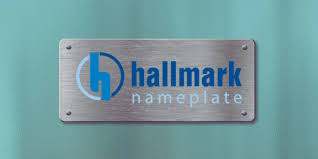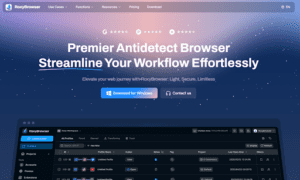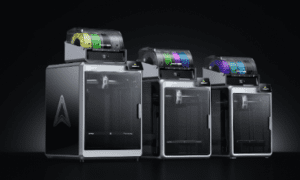In industrial, commercial, and manufacturing environments, metal name plates for equipment play an essential role. They provide critical information such as serial numbers, load ratings, safety warnings, compliance labels, and branding details. However, not all name plates are created equal. Choosing the right metal for these tags is critical for long-term durability, readability, and compliance with industry regulations.
This blog explores the most common materials used for metal name plates, their performance characteristics, and the key factors to consider when selecting the best material for your application.
Why Material Choice Matters for Metal Name Plates
Environmental exposure, mechanical wear, chemical contact, and regulatory requirements can all impact the longevity and functionality of metal name plates. If a name plate fades, corrodes, or detaches from equipment, it can pose serious safety risks, lead to non-compliance penalties, or impact traceability during maintenance.
Some key reasons why material choice is crucial:
- Environmental Resistance: Humidity, salt spray, UV exposure, and extreme temperatures demand materials that resist corrosion and wear.
- Readability Over Time: The text and graphics must remain legible for the life of the equipment.
- Adhesion and Mounting: The material must bond well with adhesives, screws, or rivets.
- Compliance: Many industries have standards (e.g., UL, OSHA, ANSI) that require specific types of labeling.
Common Materials for Metal Name Plates
- Aluminum
Aluminum is one of the most popular choices for metal name plates for equipment due to its excellent balance of strength, light weight, and corrosion resistance.
Advantages:
- Naturally corrosion-resistant
- Lightweight but strong
- Accepts a wide range of finishes (anodized, painted, or printed)
- Cost-effective for large volumes
- Suitable for indoor and moderately harsh outdoor environments
Best for:
- Asset tags
- Product ID plates
- Machinery and HVAC systems
- Utility equipment
Tip: Anodized aluminum offers improved durability and abrasion resistance while enabling high-resolution graphics and color-coding.
- Stainless Steel
For the most rugged applications, stainless steel is the gold standard. It excels in chemical processing plants, marine environments, and other demanding settings.
Advantages:
- Extreme durability and tensile strength
- Excellent corrosion and heat resistance
- Withstands harsh cleaning and sterilization procedures
- Resists scratching and mechanical damage
Best for:
- Industrial machinery
- Military-grade and marine equipment
- Chemical storage and processing plants
- Medical device labeling
Tip: Choose 316 stainless steel for maximum corrosion resistance in saltwater or acidic environments.
- Brass
Brass has a traditional appearance that’s both functional and decorative. It’s widely used in applications where aesthetics and corrosion resistance are both priorities.
Advantages:
- Distinctive golden appearance
- Good corrosion resistance (especially in dry or indoor settings)
- Excellent machinability
Best for:
- Electrical components
- Historical or decorative equipment
- Valves, pumps, and nameplates with engraved data
Tip: Brass tarnishes over time, so apply a lacquer finish or specify routine polishing if a bright appearance is important.
- Copper
While less common, copper name plates are sometimes chosen for specialized use cases due to copper’s antimicrobial properties and unique appearance.
Advantages:
- Naturally antimicrobial
- Good thermal and electrical conductivity
- Develops an attractive patina over time
Best for:
- High-end branding tags
- Specialty medical or food processing applications
- Art installations or historically themed restorations
Tip: Copper is softer than most other metals, so it may not be ideal where abrasion or heavy contact is expected.
Key Considerations When Choosing a Metal Name Plate Material
- Environmental Conditions
Ask yourself:
- Will the name plate be outdoors or indoors?
- Will it be exposed to chemicals, saltwater, or UV radiation?
- Is the location subject to abrasion, vibration, or impact?
Choose stainless steel for extreme environments, aluminum for moderate conditions, and brass or copper for protected, indoor settings.
- Expected Lifespan
If the equipment is intended to last 10+ years, the name plate must as well. Durable materials and permanent marking methods like etching, engraving, or anodizing are critical.
- Regulatory Compliance
Some industries (e.g., electrical, aerospace, and medical) require name plates that meet specific standards. Materials must be compatible with UL approval, ISO certifications, or RoHS compliance.
Be sure to work with a name plate supplier who understands these regulations.
- Graphics and Marking Methods
Different materials are compatible with different marking technologies:
- Etching and laser engraving work well on stainless steel and aluminum.
- Screen printing is best for detailed, multicolor images (used on anodized aluminum).
- Embossing is an option for long-term readability even if the surface is scratched.
- Mounting Methods
Will the name plate be:
- Riveted
- Screwed
- Welded
- Attached with industrial adhesive
Make sure the material is thick and durable enough to hold securely under the chosen mounting method. For instance, thin aluminum may not support welding but works well with adhesive or rivets.
Industry Use Cases
Industrial Manufacturing
Heavy-duty equipment often requires metal name plates for equipment that can endure extreme temperatures, oils, grease, and solvents. Stainless steel plates with deep laser etching are often preferred here.
Aerospace and Defense
Aircraft parts and military equipment demand highly durable, tamper-proof name plates that won’t degrade over time. Anodized aluminum with MetalPhoto® technology is a popular choice due to its resistance to fading under UV and abrasion.
Utilities and Power Generation
Electric transformers, circuit breakers, and utility poles are frequently labeled with aluminum name plates, often with UV-stable inks or anodized finishes.
Food and Beverage Processing
In these settings, stainless steel is essential because it withstands high-temperature sterilization and is compliant with hygiene regulations.
Choosing the Right Supplier
When sourcing metal name plates for equipment, partnering with the right manufacturer is just as important as material selection. Look for suppliers who offer:
- Material certification
- Design consultation
- Prototyping services
- Marking method expertise
- Regulatory compliance support
Ask about their ability to produce plates in custom shapes, serializations, or multi-language formats if needed.
Final Thoughts
Selecting the ideal metal name plates for equipment is about more than aesthetics — it’s a decision that impacts compliance, safety, traceability, and operational efficiency. Whether you need name plates for a factory floor, an offshore rig, or a medical sterilizer, the right material ensures the information remains visible and intact for the long haul.
From anodized aluminum for cost-effective versatility to stainless steel for unparalleled durability, each material has its place. Evaluate your environment, industry standards, and budget to make a smart, informed choice that will pay off in the long run.





























